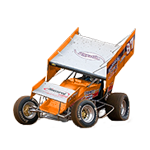- Home
- Illustrator
- Discussions
- How do I calculate 3D rotation values for an exist...
- How do I calculate 3D rotation values for an exist...
How do I calculate 3D rotation values for an existing image?
Copy link to clipboard
Copied
I frequently work with artwork exported from SolidWorks in various orientations (all axonometric). I occasionally need to "apply" labels that I create in Illustrator to one or more faces of the product.
Is there a mathematical relation between the angles I can measure from the artwork and the values I would need to enter into the 3D Rotate effect fields to match the orientation of each face? If so, what are those equations?
Explore related tutorials & articles
Copy link to clipboard
Copied
Same as when you do manual isometric drawing - the angles are based on the cosine function. Ergo the angular deviation from the perpendicular world axes can be calculated using acos and then the angles dialled in, give or take the typical oddities with specific angles and rotation order. If you have sufficient reference points you could of course also go super fancy using vector math to calculate all that stuff...
Mylenium
Copy link to clipboard
Copied
Thank you for replying. I must confess, I have never done an isometric drawing manually (and only have moderate, self-taught experience with SolidWorks). I am familiar with trigonometric functions, but unsure of how to apply them with only these three measurements. Most of what I can find requires some distance measurements, too. I understand I may be asking for more than is feasible.
Copy link to clipboard
Copied
ryandd wrote
I understand I may be asking for more than is feasible.
And perhaps making more of it than is necessary. While i fully understand the desire to apply appropriate math, in my experience, that doesn't always yield a pleasing or convincing aesthetic. Before concluding you're "dead in the water," I'd suggest you try just "eyeballing" a label onto a surface using Free Transform adjustments until it just looks right. If it looks right no one will question whether it is mathematically accurate. Trust your eye.
Copy link to clipboard
Copied
I would second John's post. Most of the time it is not necessary to be 100% exact. That said, e.g. in your example the angles pretty much are the unrounded/ non-quantized standard angle values of a 60 degree iso projection, so a bit of common sense and rule of thumb math can easily get you there. If all else fails, you can always build a bunch of standard SSR (skew, scale, rotate) actions for the most common angles and then see which result matches closest for every use case. If you make sure to lock/ reset the projection in Solidworks before exporting your artwork this should be even simpler.
Mylenium
Copy link to clipboard
Copied
Exact wasn't so much my concern as consistent. At this time, I do eyeball it. I have four other people in my department who have varying degrees of Illustrator ability (and may or may not be able to eyeball the rotation). We receive exported DXFs from Engineering and, despite our best efforts, don't always get them in a preset orientation. Many times they eyeball it. If it were as easy as plugging each of those three measurements into a formula and getting a result, then that would be helpful. It's certainly not the end of the world if it isn't.
Find more inspiration, events, and resources on the new Adobe Community
Explore Now
